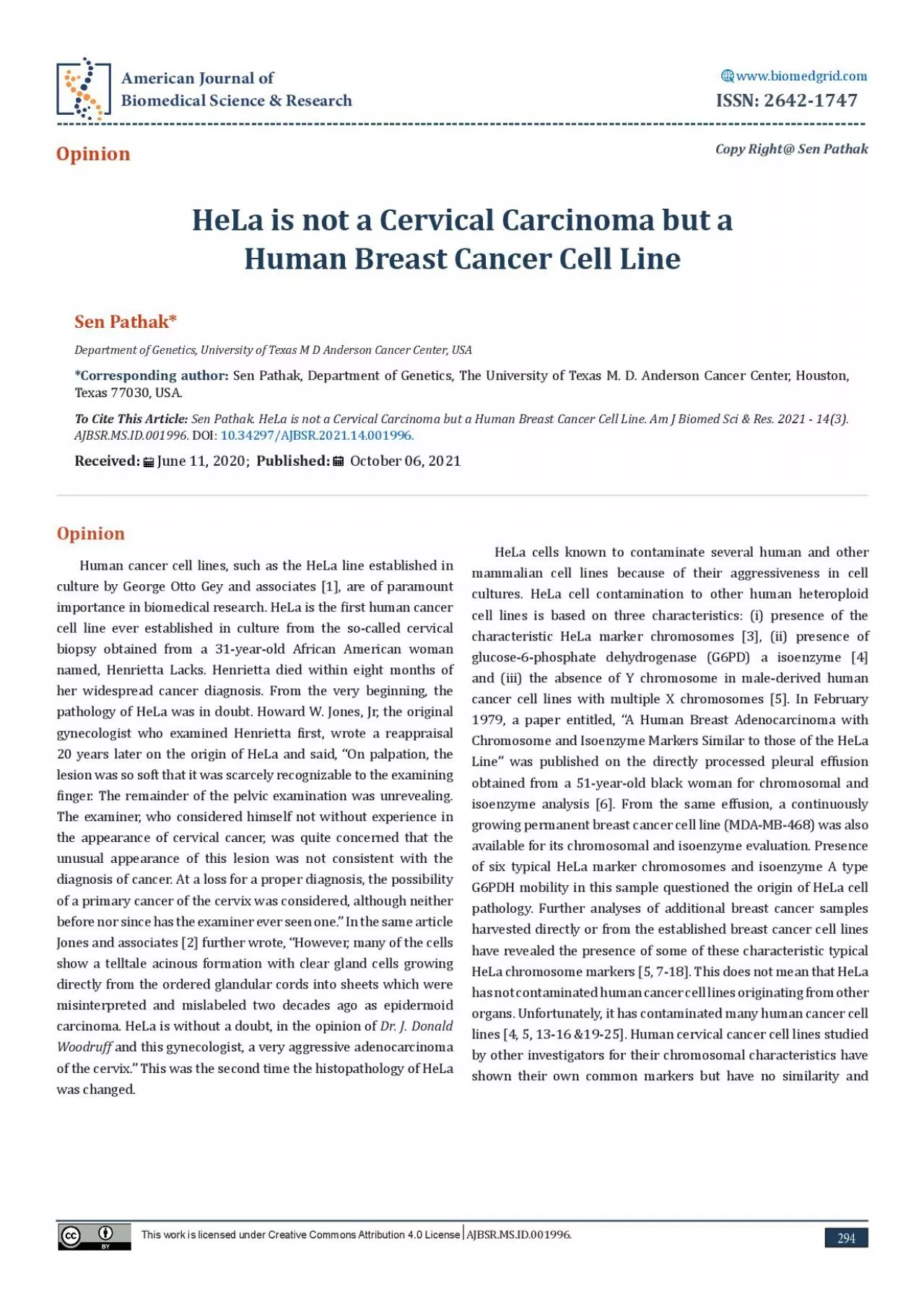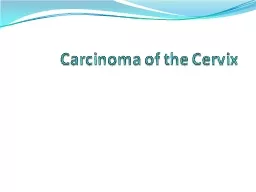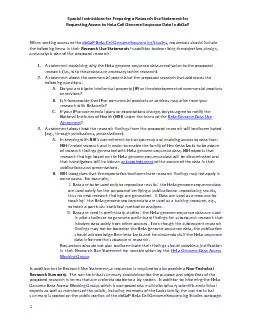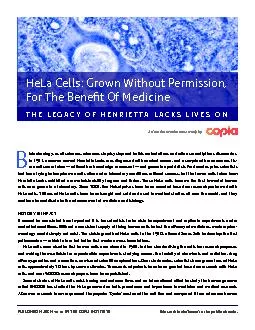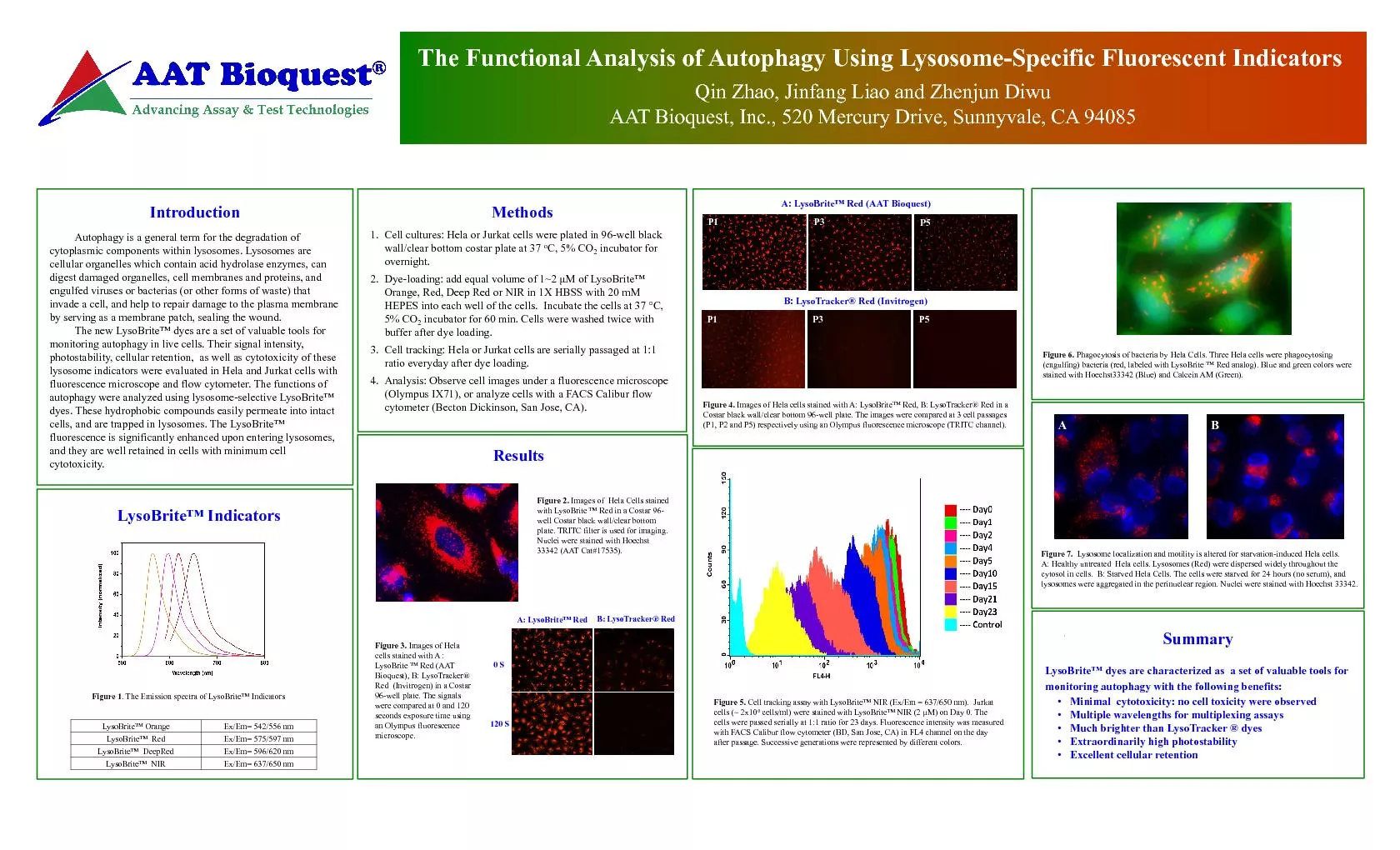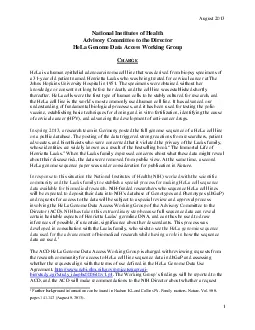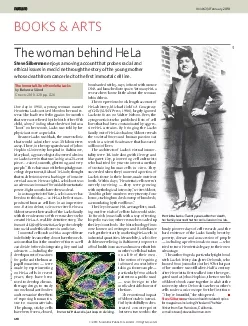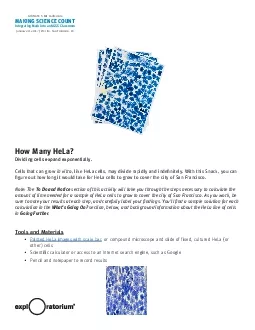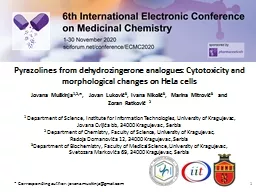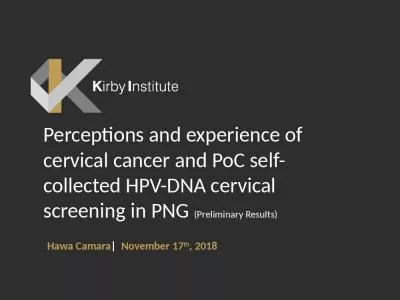PDF-HeLa is not a Cervical Carcinoma but a
Author : oconnor | Published Date : 2022-10-13
294 Human Breast Cancer Cell Line Copy Right Sen Pathak This work is licensed under Creative Commons Attribution 40 License AJBSRMSID001996 American Journal of Biomedical
Presentation Embed Code
Download Presentation
Download Presentation The PPT/PDF document "HeLa is not a Cervical Carcinoma but a" is the property of its rightful owner. Permission is granted to download and print the materials on this website for personal, non-commercial use only, and to display it on your personal computer provided you do not modify the materials and that you retain all copyright notices contained in the materials. By downloading content from our website, you accept the terms of this agreement.
HeLa is not a Cervical Carcinoma but a: Transcript
Download Rules Of Document
"HeLa is not a Cervical Carcinoma but a"The content belongs to its owner. You may download and print it for personal use, without modification, and keep all copyright notices. By downloading, you agree to these terms.
Related Documents

